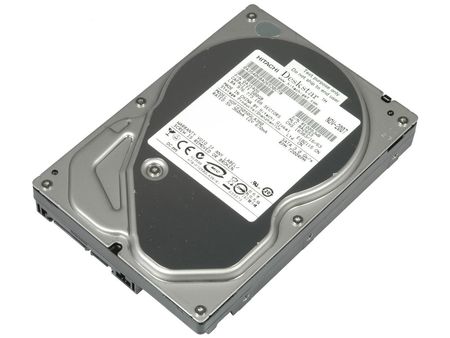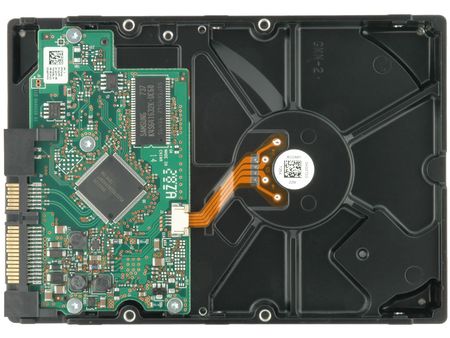Energy-Saving Hard Drives
Hitachi Deskstar P7K500
Hitachi is close to releasing its next generation desktop hard drive, which is expected to replace the five-platter Deskstar 7K1000 with units using fewer moving parts. This could also bring an opportunity to update the energy-efficient product lineup, which, at this point, includes only capacities of up to 500 GB. Considering that efficiency is often measured by storage capacity per watt, this doesn’t put WD in front.
A hard drive that requires little power when it’s idle but doesn’t perform well might require more total power to complete a particular task than another product. Hence performance is also still important, because a particularly slow hard drive will counter its efficiency benefits through longer processing times at higher power consumption states.
There are four capacity points available: 500, 400, 320 and 250 GB. The latter are mainly interesting for PVRs and similar consumer electronics devices, as most of the hard drives in the PC desktop mainstream should provide at least 500 GB of capacity. Smaller capacities won’t provide much cost savings on a new PC, but will certainly result in insufficient storage capacity for the predictable future. However, Hitachi clearly targets the consumer market, as the Deskstar P7K500 is available with SATA or UltraATA interfaces, the latter of which still dominates the consumer storage market and the low end.
The P7K500 drives all rotate at the standard spindle speed of 7,200 RPM, while Western Digital decided to reduce speed in order to reduce power requirements. All UltraATA versions have 8 MB of cache memory, while the SATA versions (with the exception of the 250 GB entry-level drive) are equipped with 16 MB cache. The drives are based on a 250 GB per platter storage density, which means that the 250 GB model runs on a single platter, while all other capacities utilize two platters.
The Deskstar P7K500 is indeed much more efficient than other 3.5” hard drives running at 7,200 RPM: it consumed 4.7W of idle power, which is slightly more than the statement we found in Hitachi’s datasheet (4.5 W). While this power requirement is clearly higher than the results we measured for the Western Digital GreenPower drives, we found that the maximum power requirement is actually amazingly low at only 6.6 W—other 7,200 RPM drives easily require between 9 and 11 W when a lot of head movement is involved. This is also consistent with the “up to 40% operational power savings” stated by Hitachi. Note that the UltraATA hard drives are generally more efficient, as the parallel interface requires approximately 250 mW less power than Serial ATA connections.
Hitachi says that it used power saving technologies that were introduced on Travelstar notebook hard drives. This could be the reason for the long average access time of 18.7 ms, which is as much time as a 2.5” hard drive would take. However, it provides a good explanation as to why Hitachi maintains such low maximum power consumption.
Get Tom's Hardware's best news and in-depth reviews, straight to your inbox.
Current page: Hitachi Deskstar P7K500
Prev Page Saving Power on Hard Drives Next Page Western Digital GreenPower Family

